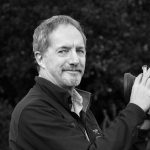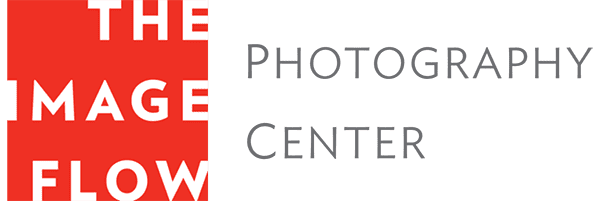

Don Whitebread owns a decent telescope but admits he’s not much of an astronomer. He bought the telescope to do astrophotography, and then realized it didn’t give him the opportunity to play with time in the way he’d imagined.
“The work I’m doing, I feel like I’m capturing a particular moment. It’s a long moment, but still, it’s a moment in time when these stars happen to line up with this foreground and it creates a composition,” he said.

The work he’s referring to is part of an ongoing collection called Starlight. He shoots mostly with a medium-format Hasselblad and black and white film—digital cameras don’t allow for the type of exposure he’s after. Each exposure requires an exposure of around an hour and a half. The result is a glimpse of thousands of stars moving across the night sky.
A primarily self-taught photographer, Don has been making photographs since his teens. His photographs have been previously shown in solo and group exhibitions at the World Affairs Council, the Center for Photographic Art, and Etherton Gallery, among others, and have also appeared in magazines including Black and White and LensWork.

In the beginning, to make the photographs, he relied on his experience of the stars and which way they’re moving to help him scout locations and set up his shots. But Don is also a private pilot and he realized that the vast weather resources available were a big help in deciding where and when to photograph. “Everybody has access to these resources, but as a pilot, you get really familiar with how they work and you’ve got them consistently at your fingertips,” he said.
He also uses an iPhone app called Sky Guide. “It’s just brilliant. It knows where I am and what time it is, and it will show me where the stars are. Then I hit the fast-forward button and it will show me what the sky’s going to look like in two hours.”
Knowing how the stars are moving and where they’re moving allows him to create different compositions. Of course, the stars don’t actually move, we do.
“The interesting thing is if you’re facing due east or west, the stars appear to move faster. If you’re facing north or south there’s not as much movement. If I want a really long track of the stars, I can either face my camera east or west or use a longer exposure,” said Don.
The locations he chooses to shoot in are really quite iconic during the day—Ansel Adams-like landscapes. But at night, they’re completely different. “I really enjoy seeing how some of these places that I’m used to in the daytime completely transform at night,” he said.
According to Don, 3:00AM is the best time for night photography, when there are fewer jets in the air and a lower chance of people coming by with a flashlight, but sometimes even that can make for an interesting photograph.
“I was in Yosemite and I had scouted out a place right near the Ahwahnee—not really remote but it was a decently dark night. I was in the middle of an hour exposure when these guys with the brightest headlamps I’ve ever seen start repelling down the middle of my frame—there’s a big cliff called Royal Arches. I thought they were rescuing someone but I found out from a passerby that this is a Yosemite thing,” Don recalls.
“I thought, I’m ruined, because the lights were really bright, but I decided to let the shot run its course. When I got home and developed the film, it was just perfect. It was an area that was going to be a big black hole in the composition and these guys had lit it up just about right. I don’t usually have people or man-made things in my images but this worked out perfectly.”

So what does he normally do once he’s got his camera set up on the tripod and the shutter open? He says a nap in the car is at the top of his list and you’d be surprised the places you can actually get cell phone service to check the Giants score. But his favorite thing is just to sit back in his chair and let it all go by.
“It’s amazing how much is going on in the night, the little noises here and there and watching the satellites. That’s probably my favorite thing. It’s fun to just watch it all happen.”
 Beginning August 27, a selection of images from Don Whitbread’s Starlight collection will hang on the back wall at The Image Flow.
Beginning August 27, a selection of images from Don Whitbread’s Starlight collection will hang on the back wall at The Image Flow.

